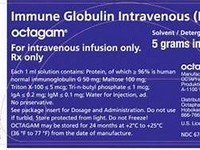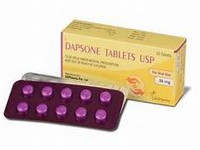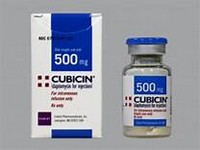Ketoconazole

Ketoconazole
CLINICAL USE
Antifungal agent
DOSE IN NORMAL RENAL FUNCTION
200–400 mg once daily
PHARMACOKINETICS
Molecular weight :531.4 %Protein binding :>90 %Excreted unchanged in urine : 13 Volume of distribution (L/kg) :0.36half-life – normal/ESRD (hrs) :2/3.3 DOSE IN RENAL IMPAIRMENT
GFR (mL/MIN)
20 to 50 : Dose as in normal renal function 10 to 20 : Dose as in normal renal function <10 : Dose as in normal renal function DOSE IN PATIENTS UNDERGOING RENAL REPLACEMENT THERAPIES
CAPD :Not dialysed. Dose as in normal renal function HD :Not dialysed. Dose as in normal renal function HDF/high flux :Unknown dialysability. Dose as in normal renal functionCAV/VVHD :Unknown dialysability. Dose as in normal renal function IMPORTANT DRUG INTERACTIONS
Potentially hazardous interactions with other drugsAnalgesics: inhibits buprenorphine metabolism – reduce buprenorphine doseAnti-arrhythmics: increased risk of ventricular arrhythmias with disopyramide – avoid concomitant useAntibacterials: metabolism increased by rifampicin; may reduce rifampicin concentration; concentration possibly reduced by isoniazid; avoid concomitant use with telithromycin in severe renal and hepatic impairmentAnticoagulants: anticoagulant effect of coumarins enhancedAntidepressants: avoid concomitant use with reboxetine; ketoconazole increases concentration of mirtazepineAnti-epileptics: concentration of ketoconazole reduced by phenytoin; concentration of carbamazepine possibly increasedAntihistamines: concentration of loratidine possibly increased; avoid concomitant use with mizolastineAntimalarials: manufacturer advises avoid artemether and lumefantrine with ketoconazoleAntipsychotics: increased risk of ventricular arrhythmias with pimozide – avoid concomitant use; possibly increased concentration of quetiapine – reduce quetiapine dose; increased risk of ventricular arrhythmias with sertindole – avoid concomitant use; inhibits aripiprazole metabolism – reduce aripiprazole doseAntivirals: concentration of both drugs increased with darunavir; inhibits metabolism of indinavir; concentration reduced by nevirapine – avoid concomitant use; ketoconazole and ritonavir can increase concentration of each other; concentration of saquinavir increased; concentration increased by amprenavirAnxiolytics and hypnotics: concentration of alprazolam and midazolam increased (risk of prolonged sedation) Calcium-channel blockers: increased concentration of felodipine; avoid with lercanidipine and nisoldipine; possibly inhibits metabolism of dihydropyridinesCiclosporin: increased ciclosporin concentrationCilostazol: possibly increased concentration of cilostazol, avoid concomitant useCinacalcet: increased cinacalcet concentration Diuretics: increased eplerenone concentration – avoid concomitant useDomperidone: possibly increased risk of arrhythmias Ergot alkaloids: increased risk of ergotism with ergotamine and methysergide – avoid concomitant use5HT 1 agonists: increased concentration of eletriptan – avoid concomitant use; increased almotriptan concentration (increased toxicity).KEToConAZoLE 407Ivabradine: concentration of ivabradine increased – avoid concomitant useLanthanum: reduces absorption of ketoconazole – give at least 2 hours apartSirolimus: concentration increased by ketoconazole – avoid concomitant useStatins: possibly increased risk of myopathy with atorvastatin and simvastatin – avoid concomitant use with simvastatin Tacrolimus: increased tacrolimus concentrationTheophylline; possibly increased concentration of theophylline Vardenafil: increased concentration of vardenafil, avoid concomitant use ADMINISTRATION
Reconstition
– Route
Oral, topical Rate of Administration
–Comments
– OTHER INFORMATION
Monitor LFTs especially if on long-term treatment.
See how to identify renal failure stages according to GFR calculation
See how to diagnose irreversible renal disease
Home









